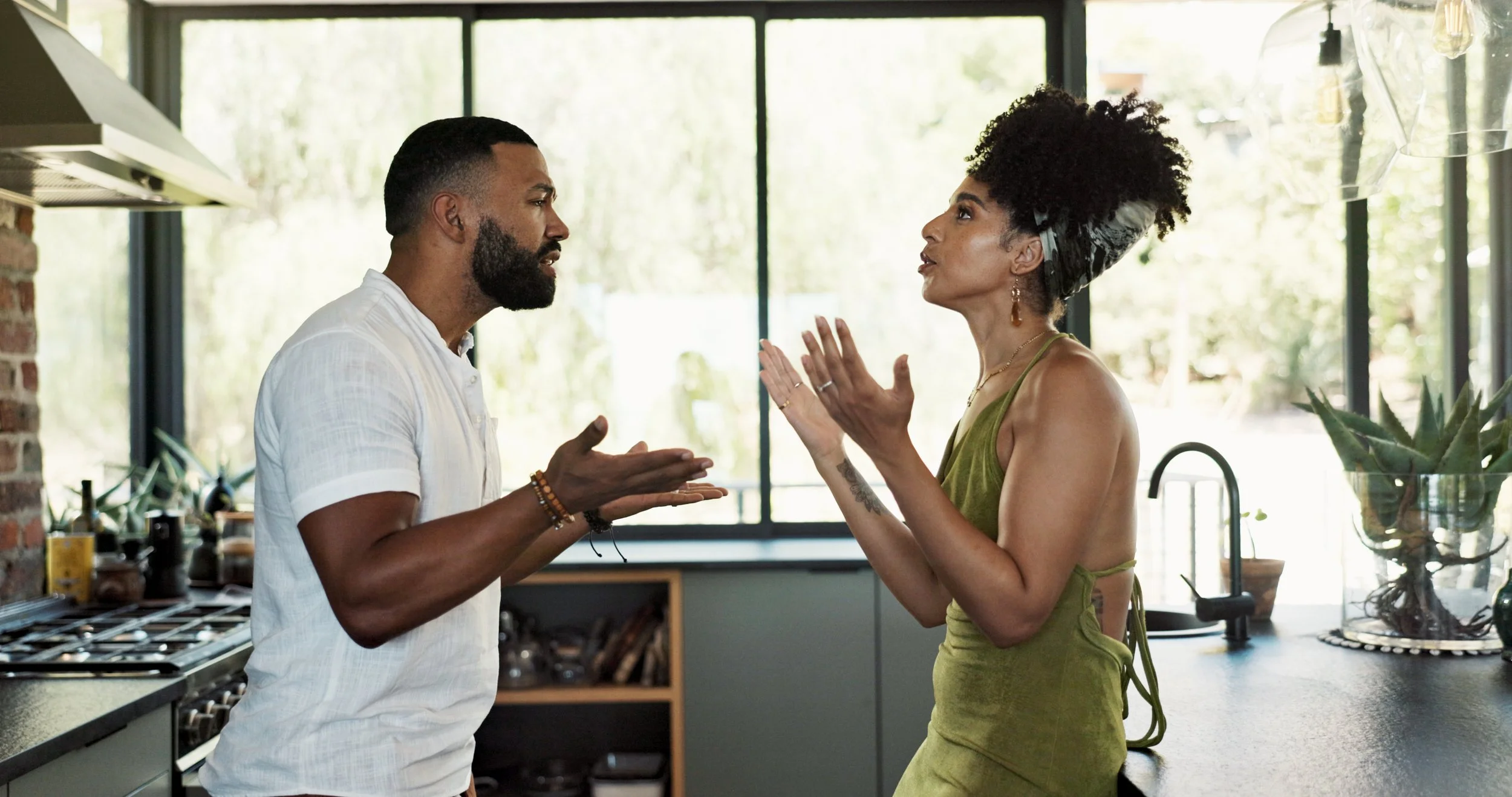Inside Rouse: High Conflict Couples Training
From individuals to couples to polycules, the providers at Rouse have a wide range of clientele they work with. At a team meeting in April, the founder and clinical director of Rouse Relational Wellness David F Khalili LMFT hosted a training session on how to better understand and work with high conflict couples. During the team meeting, David defined what they are, why these types couples may exist and how they develop, different approaches to take when facing a high conflict couple, and what cultural influences may show up. Working with a high conflict couple can be a difficult and frustrating endeavor for providers so having an informative and open discussion on the subject is important and relevant to the Rouse values of reducing shame and offering a welcoming space to clients.
Defining High-Conflict Couples
Before starting a first session with a new client or clients, they will typically have a consultation call with an Intake Coordinator or directly with the provider they are interested in working with. David notes that this first point in contact is where providers can look for signs of conflict. Some of signs he describes are jumping into an argument, palpable tension, passive aggressive remarks, and repeating the same fight over and over.
In a session appointment, there are many ways to recognize high conflict in couples. David names a few, stating there may be some yelling, tense muscles, anger, and heightened escalation. To stay on subject, David suggests to prioritize the process over the content even during consultation calls by naming what is going on and ask if that resonates with the client.
Why Couples May be in High Conflict
There are a few potential reasons why couple issues may turn into high conflict issues and David discusses the following: attachment, and trauma. Attachment theory delves into the connection between space and closeness with a relationship and is often categorized as secure, anxious, avoidant, and disorganized. Whether a person may be anxious, avoidant, or otherwise, an insecure attachment may lead to reactivity which can look like jumping to conclusions, an all-or-nothing mentality, being quick to anger, and jumping into or avoiding relationships. David also notes protest behaviors that involve a partner or partners being in a push and pull dynamic which involves a cycle of protest, withdrawal, and reconciliation. Another way to think of it is, as stated by David, "I want you to be with me but only when I say it and the goal post is going to constantly move.”
Another way David discusses why couples may be in high conflict comes from trauma responses. In couples’ conflict, a provider may see any of the following responses: fight, flight, freeze, or fawn. Being able to help couples recognize trauma responses in general as well as their own responses and their partners can be useful in creating a better understanding of how one person’s response may interact with the other’s. Some behaviors to look for are arguing, lashing out, and the four horsemen (stonewalling, contempt, defensiveness, criticism). To be mindful of shame sensitive and anxious clients, if a provider notices clients exhibiting a type of response Khalili recommends a gentle recognition approach rather than a snap call to attention.
How High Conflict Couples May Develop
David discusses how a dysregulated nervous system plays a part in couples with high conflict. David mentions the polyvagal theory which refers to how the automatic nervous system influences emotional and behavioral responses and the safe and sound protocol, both developed by Dr. Stephen Porges, which refers to a method of nervous system regulation through listening therapy. Although initially skeptical, David recalls a success story where two clients who had an intense reaction to their partners anger, both whom also had abusive fathers with booming voices, after a few sessions they were able to better regulate and ground themselves during arguments without immediately entering flight or fight mode. David suggests other tips and techniques to help couples recognize and regulate their nervous systems such as using the initiator-inquirer method, dream within conflict, or structured journaling.
Various Approaches
There are three major approaches Khalili recommends during the training to help with high conflict couples: Relational Life Therapy (RLT), Relationship Grid, and Developmental Model of Couples Therapy (DMCT). Relational Life Therapy or RLT helps clients understand their inner child and categorizes the inner parts as “Wise Adult,” “Adaptive Child,” and “Wounded Child.” David states that helps clients get to a place where they could name the parts they are speaking from as a way to slow down and regulate their nervous system.
The Relationship Grid, a personal favorite of David, is a framework that helps clients to better understand their relationship patterns and is divided four quadrants where there is a vertical axis with grandiosity and shame opposing one another and a horizontal axis with walled off and boundaryless opposing one another. Potential relationship styles a client or couple can be categorized in is walled off and shame (withdrawal, depressed), walled off and grandiose (indifference and passive-aggression), boundaryless and grandiose (control and anger), and boundaryless and shame (desperation and manipulation). Healthier relationships will in the center of the quadrant and while it may fall into one of the quadrants at some point it does not get stuck in a quadrant for long.
The Developmental Model of Couples Therapy or DMCT is a framework that views and breaks down human relationships as if someone was viewing and breaking down a person’s human development. The stages are as follows: symbiosis (honeymoon phase), differentiation (stay together while becoming their own person), practicing/individuation (maintenance phase), rapprochement (coming and going), and synergy/mutual interdependence. David notes that for couples, most conflicts occur when couples are moving from symbiosis to differentiation or from differentiation to practicing/individuation. This is also when attachment styles and trauma responses are likely to appear.
Types of Couples
There are four typical couple types that are seen by providers: Hostile-Dependent (intense codependency), Conflict Avoidant (trouble opening up), Validating (relaxed and acknowledging), and Hostile-Detached (contemptuous). David stresses that differentiation is key to helping couples in conflict. Counter narrative or counter storytelling is an effective way to help remove the “shoulds” from their relationships and themselves and add nuance to their lives. David also mentions simply disagreeing with each other is an effective method of differentiating. Some clients may be under the belief that in order to be loved they must be compliant so breaking away that belief and saying no to things would be beneficial.
Cultural Humility
A major aspect David asks providers to be mindful of is any cultural influences that may arise within couple’s therapy. Some influences may come include power imbalances, gender roles, cultural expectations and norms (especially regarding sexuality), and familism. A goal David set for Rouse providers is to strive for cultural humility, not cultural competency, by staying curious, aware, and considerate.
Takeaways
In defining and better understanding how and why high conflict couples come to be, David urges providers to use this information to not only help their clients but to help develop their own internal boundaries as well. This is important work so understanding what a high conflict couple is and how to best help them all while approaching them with compassion and curiosity means a lot. It is also important to understand where their own boundaries lie so they can also care for themselves. David ends the team meeting stating, “We’re here to jump in, but not to save them.”

